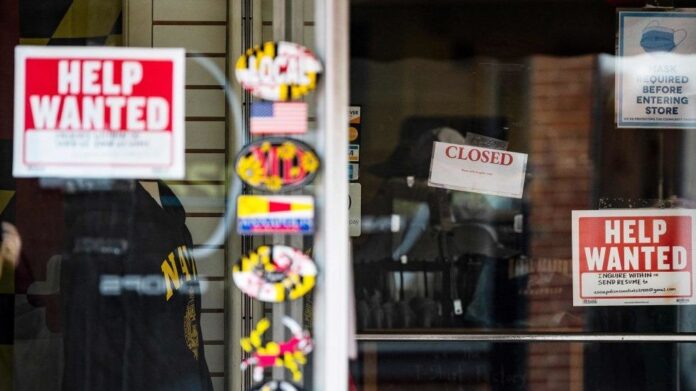Criticism of President BidenJoe BidenRNC warns it will advise presidential candidates against future debates if panel doesn’t make changes Washington Post issues correction on 2020 report on Tom Cotton, lab-leak theory Graham says Israel will request billion from US after Gaza war MORE’s infrastructure proposal — a plan with very little public infrastructure — has forced the administration to refer to it as a jobs program, “The American Jobs Plan.” It is understandable why the administration has downplayed the word “infrastructure,” but choosing to call his proposal The American Jobs Plan does not solve the problem.
In April, the unemployment rate was 6.1 percent, not far above the Congressional Budget Office estimate of 4.7 percent as the long-term natural rate, a level that maximizes the efficiency of the labor market in matching those seeking work to available jobs, a sustainable indicator for economic growth. The economy is well along to alleviating the pandemic-related lockdown shocks to the labor market over the past 13 months, so there is likely to be little gain in further fiscal stimulus as the unemployment rate continues to fall — down to 4.7 percent and perhaps toward the historically low level of 3.5 percent reached in February 2020.
Many pundits suggest that the nation’s 9.8 million unemployed people in April reflect a massive problem requiring further dramatic policy response. But this is a gross exaggeration. Even at the business cycle peak in February 2020, 5.7 million people were unemployed. That is more than half the number currently unemployed. Only the remaining 4 million would return to work under the most optimistic conditions.
Many people who left employment also left the labor force. They will not be coming back. Labor force participation, the percentage of people working or looking for work, has fallen in the three previous recessions and continued to be below its previous peak level a year after the trough or worst of the recession. After each of those previous recessions, many analysts argued that the decline in participation — dropping out of the labor force — would reverse as the economy recovered. In each case they were wrong. Many of those whose jobs were lost chose to retire early, take disability, go back to school or stay at home for other reasons. They did not reenter the labor force in numbers large enough to reverse the losses in participation during the recession and recovery.
In the recent recession, from the business cycle peak in February 2020 to the likely trough in April 2020, the labor force participation rate fell from 63.4 percent to 60.2 percent. It rebounded sharply because of some easing of lockdowns for a couple of months, but generally it has been much smaller than at the business cycle peak. In April 2021, a year after the trough, it was 61.7 percent, down 1.7 percent from February 2020, when the recession began. The decline in the labor force participation rate in the previous recession from the peak (December 2007) to a year after the trough of the recession was 1.4 percentage points — not much smaller than the current case, especially considering the larger loss of employment and older labor force than 11 years earlier.
Workers did not come back then or following the two previous recessions. A measure of the lost potential workers is the decline in the civilian labor force from 164.4 million in February 2020 to 161.0 million in April 2021 — 3.4 million potential workers, or about 2.1 percent of the pre-pandemic civilian labor force. Some may argue that this estimate is too large since some people may return to the labor force as the incidence of COVID-19 weakens further and more firms are allowed to fully reopen, but those processes are nearly complete and there has been no evidence of those former workers returning to work.
Should the economy achieve the natural rate of unemployment, about 7.6 million people would remain unemployed and only about 2.3 million more people would be working than last month. This easily could be reached in less than two months, if employment continues to grow at the average monthly pace of the past 12 months. But few expect such rapid growth to continue. Even at the slow pace of employment growth since last October, it would only take until the end of this year to reach the natural rate of unemployment of 4.7 percent.
Renaming the infrastructure plan as a jobs plan is misleading, at best. The plan’s employment gains are not projected to begin until late this year, or early next, and by then the economy reasonably can be expected to reach its sustainable path on output and employment. It is not a jobs program for the near future. Even if it were, and the spending hypothetically could come immediately, there would be few jobs to increase. Work on a new program would quickly exhaust the 2 million or so available workers and simply lead to a surge in competition to obtain new workers among those already working.
John A. Tatom is a fellow at the Institute for Applied Economics, Global Health and the Study of Business Enterprise at Johns Hopkins University and a former research official at the Federal Reserve Bank of St. Louis.
Credit: Source link









